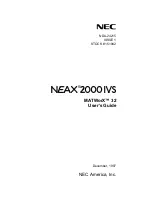
Appendix D. An Introduction to Disk Partitions
85
continued to grow, it became more and more likely that a person could configure four reasonably-
sized partitions and still have disk space left over. There needed to be some way of creating more
partitions.
Enter the extended partition. As you may have noticed in Table D-1, there is an "Extended" partition
type. It is this partition type that is at the heart of extended partitions.
When a partition is created and its type is set to "Extended," an extended partition table is created. In
essence, the extended partition is like a disk drive in its own right — it has a partition table that points
to one or more partitions (now called
logical partitions
, as opposed to the four
primary partitions
)
contained entirely within the extended partition itself. Figure D-7, shows a disk drive with one primary
partition and one extended partition containing two logical partitions (along with some unpartitioned
free space).
Extended
OS/2 HPFS
Linux native
DOS
Figure D-7. Disk Drive With Extended Partition
As this figure implies, there is a difference between primary and logical partitions — there can only
be four primary partitions, but there is no fixed limit to the number of logical partitions that can exist.
However, due to the way in which partitions are accessed in Linux, you should avoid defining more
than 12 logical paritions on a single disk drive.
Now that we have discussed partitions in general, let us review how to use this knowledge to install
Red Hat Enterprise Linux.
D.1.4. Making Room For Red Hat Enterprise Linux
There are three possible scenarios you may face when attempting to repartition your hard disk:
•
Unpartitioned free space is available
•
An unused partition is available
•
Free space in an actively used partition is available
Let us look at each scenario in order.
Note
Keep in mind that the following illustrations are simplified in the interest of clarity and do not reflect
the exact partition layout that you encounter when actually installing Red Hat Enterprise Linux.
D.1.4.1. Using Unpartitioned Free Space
In this situation, the partitions already defined do not span the entire hard disk, leaving unallocated
space that is not part of any defined partition. Figure D-8, shows what this might look like.
Содержание ENTERPRISE LINUX 3 - FOR X86-ITANIUMTM-AMD64 AND INTEL EXTENDED MEMORY 64 TECHNOLO
Страница 6: ......
Страница 12: ...vi Introduction ...
Страница 70: ...58 Chapter 4 Installing Red Hat Enterprise Linux ...
Страница 92: ...80 Appendix C Troubleshooting Your Installation of Red Hat Enterprise Linux ...
Страница 112: ...100 Appendix G Additional Resources about Itanium and Linux ...
Страница 118: ......
Страница 120: ...108 ...
















































